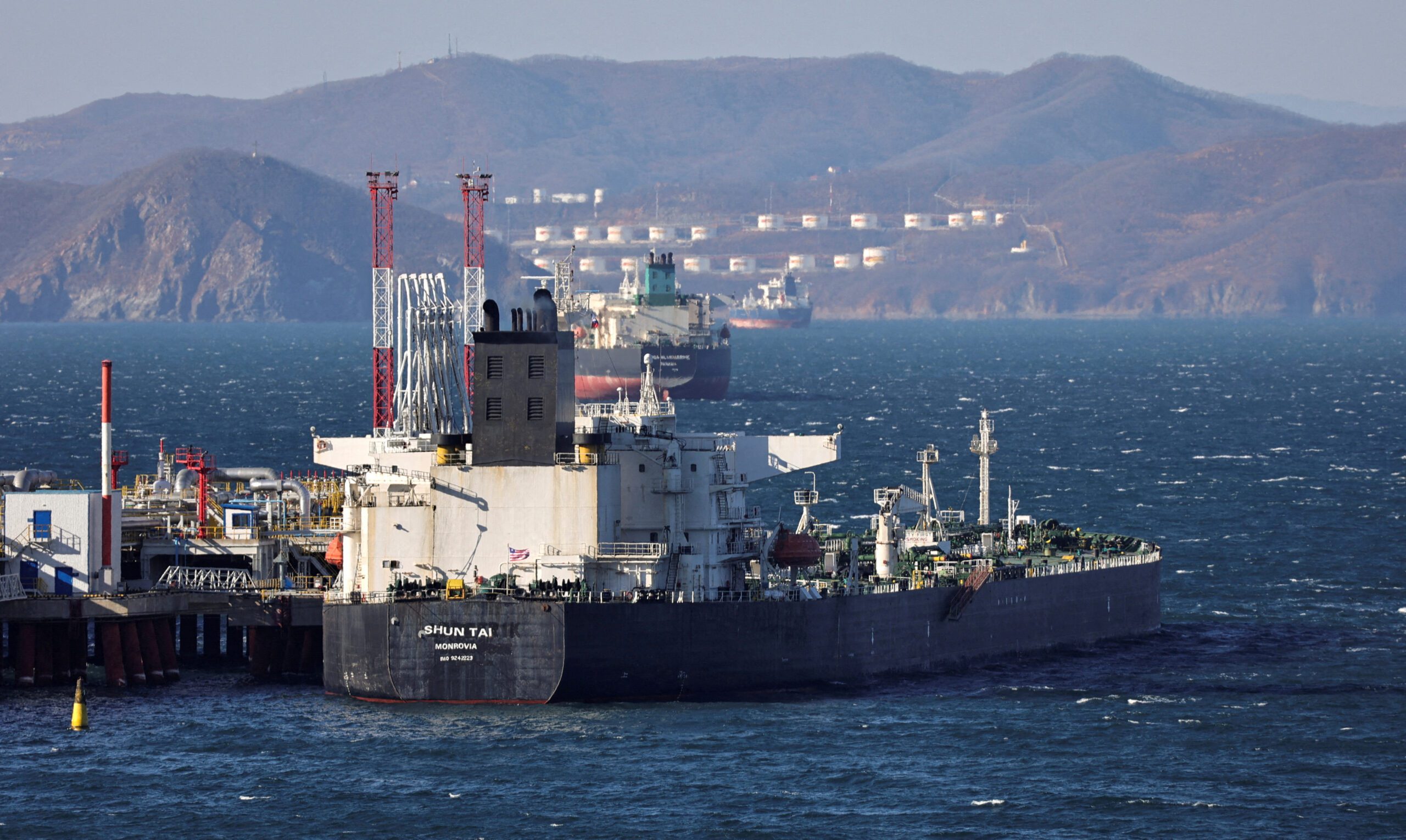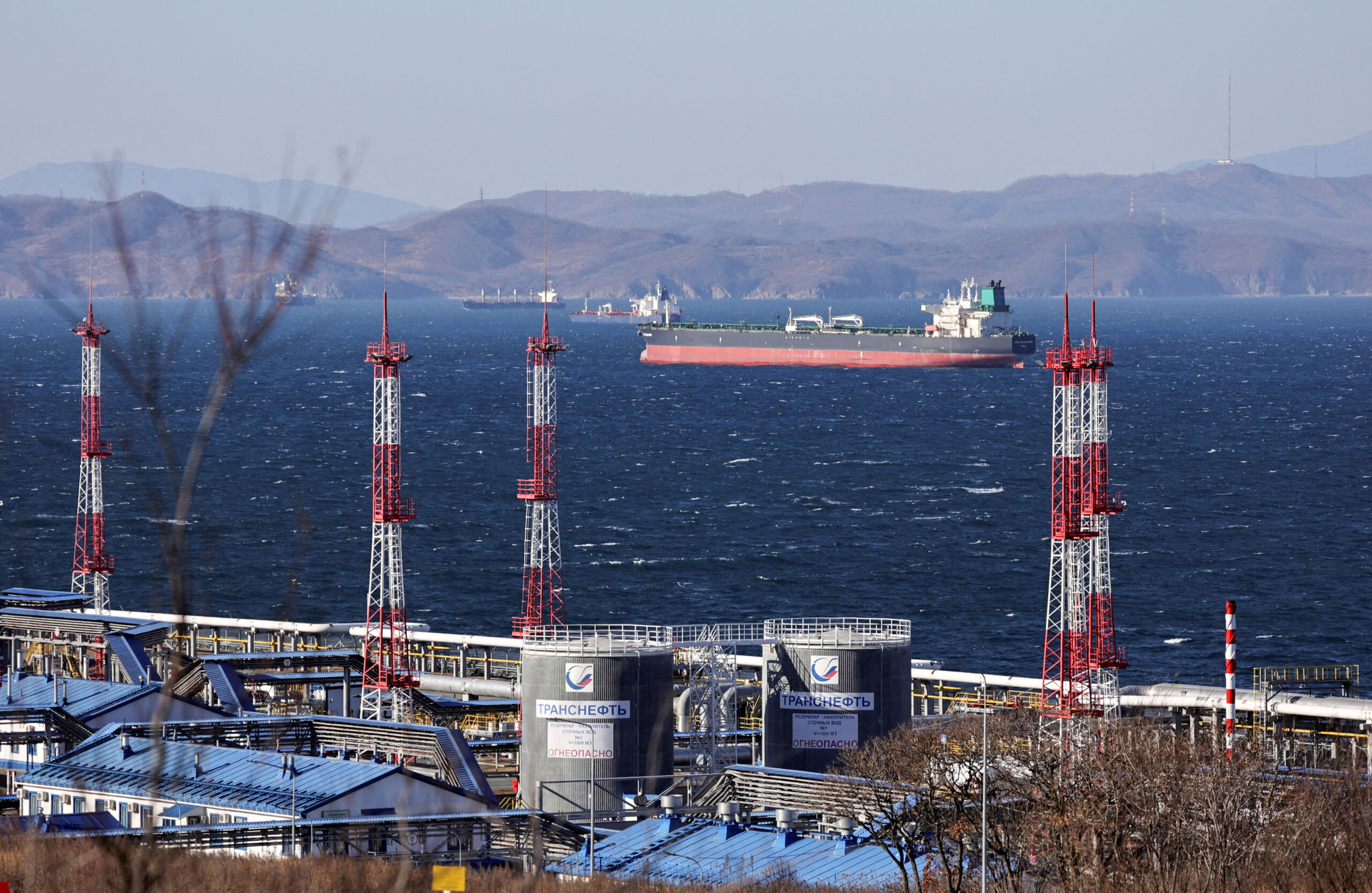By Julian Lee
May 20, 2025 (Bloomberg) –Russia’s oil exports are becoming increasingly difficult to track as the tankers moving the barrels disappear from digital tracking systems.
Moscow’s exports slipped slightly in the past four weeks, according to monitoring of those flows by Bloomberg. But keeping track is becoming harder because more and more ships are giving false locations — or no locations at all — to the industry’s Automated Information System, or AIS for short.
Ships hauling Russian crude are resorting to an increasing array of tactics to hide their activities while taking on cargoes. Automated position signals around export terminals in the Baltic, Black Sea and Arctic are disappearing more frequently than they did last year, or else showing vessels in impossible locations.
Sixteen out of 20 tankers loading at Primorsk in the first 18 days of May sent signals like those in the image below, showing them to be in the middle of the largest of the Beryozovye Islands off Primorsk. The pattern of signals appears too similar and too frequent to be anything other than deliberate.
In the east, no signals are received for several days from vessels conducting ship-to-ship transfers of crude in Nakhodka Bay or, more recently, off the Russian port of Zarubino. Satellite imagery often reveals their activity.
The obscured flows coincide with a vast number of vessels falling under western sanctions. At one stage, Indian refiners — vital buyers of Russian barrels — said they’d avoid cargoes moved in any way secretively to get around sanctions. It’s not clear they’ve stuck to that approach.
Despite these tactics, it’s still possible to keep a good track of total shipments using satellite imagery, shipping reports and observation of automated signals over longer periods of time.
These methods show that total crude flows in the four-week period to May 18 stood at about 3.4 million barrels a day. On a week-to-week basis, which is more volatile, they’re also down slightly.
Crude Shipments
A total of 32 tankers loaded 23.79 million barrels of Russian crude in the week to May 18, vessel-tracking data and port-agent reports show. The volume was down from 24.39 million barrels on the same number of ships the previous week.
Crude flows in the period to May 18 stood at about 3.4 million barrels a day using both weekly and the less volatile four-week average flows. On a weekly basis, they were down by about 90,000 barrels from the seven days to May 11, while four-week average flows edged lower by 10,000 barrels a day.
There was one shipment of Kazakhstan’s KEBCO crude during the week from the Black Sea port of Novorossiysk.
Export Value
The gross value of Moscow’s exports rose by about $50 million, or 4%, to $1.28 billion in the week to May 12, with the drop in flows more than offset by an increase in weekly average prices that saw Urals crude priced above $50 a barrel for the first time in three weeks.
Export prices of Russian Urals crude from the Baltic and Black Sea both rose by about $3 a barrel to average $51.50 and $52.20 a barrel respectively. The price of key Pacific grade ESPO increased by about $3.20 to $57.20 a barrel. Delivered prices in India were about $2.80 higher, at $62.90 a barrel, all according to numbers from Argus Media.
On a four-week average basis, the gross export value of Russia’s crude shipments slipped. Using this measure, the value of exports fell by 1% in the period to May 18 to about $1.26 billion a week.
Flows by Destination
Observed shipments to Russia’s Asian customers, including those showing no final destination, rose to an eight-week high of 3.12 million barrels a day in the 28 days to May 18.
The figures include about 530,000 barrels a day on ships from Western ports showing their destination as Port Said or the Suez Canal, or those from Pacific ports with no clear delivery point. They’re also boosted by another 80,000 barrels a day on vessels yet to show any destination.
Flows to Turkey in the four weeks to May 18 slipped back to about 290,000 barrels a day, down by about 30,000 barrels a day from the figure for the previous week.
© 2025 Bloomberg L.P.

 Join The Club
Join The Club










